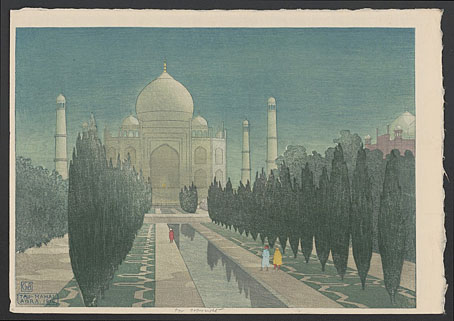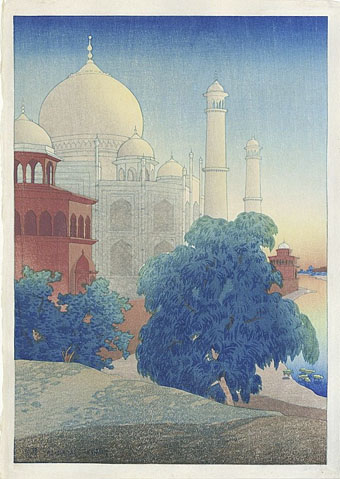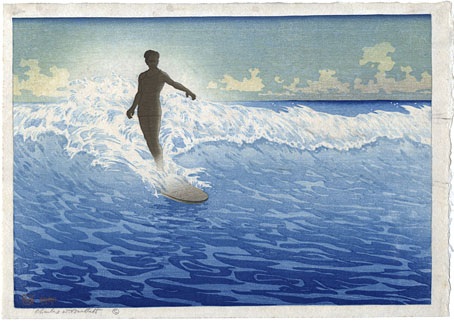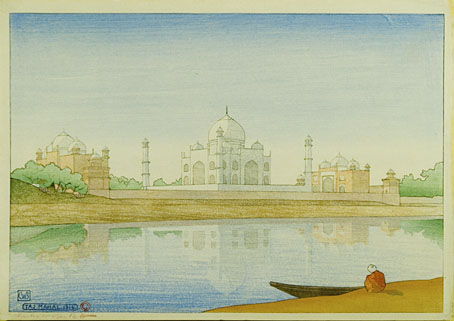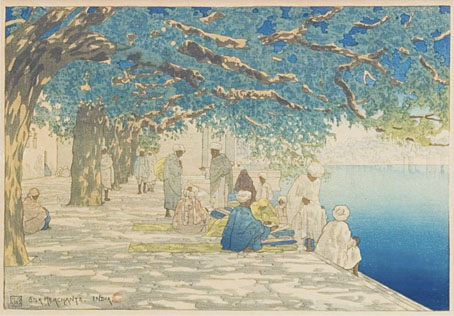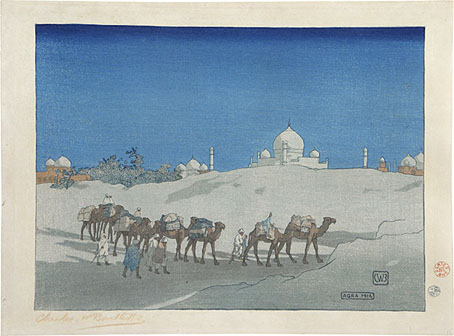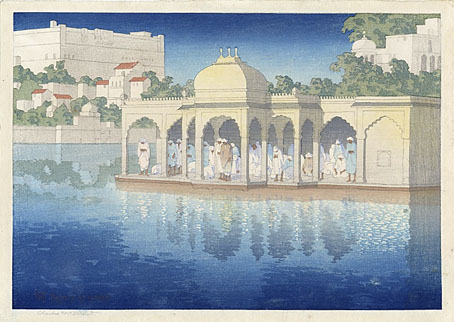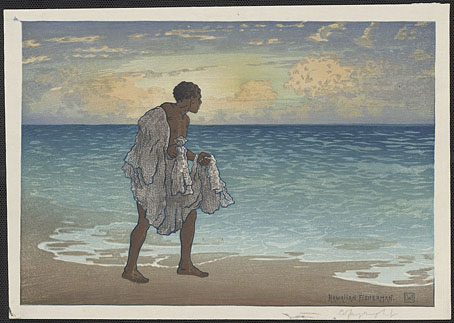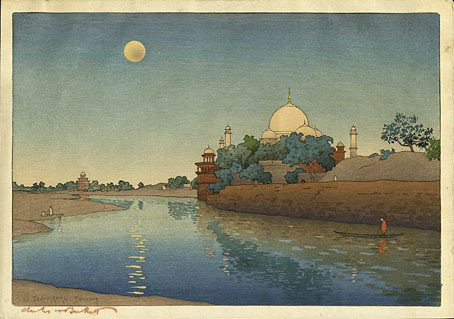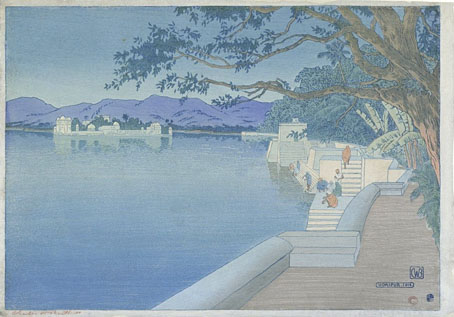Taj Mahal, Agra (1916).
In which British artist Charles W. Bartlett (1860–1940) applies the later style of ukiyo-e landscapes to his views of India and Hawaii. Bartlett was one of a handful of Western artists to have his work reproduced by a Japanese publisher of woodblock prints, Watanabe Shozaburo, so his mastery of the form may be taken as having been given a literal seal of approval.
Taj Mahal, Sunset (1920).
Considering the popularity and influence of Japanese prints I’m surprised that more artists haven’t attempted series productions like Hokusai’s Thirty-Six Views of Mount Fuji, rather than simply borrowing the familiar approach to line and colour. To date the only Western example I know of is Henri Rivière’s Hokusai homage, Thirty-Six Views of the Eiffel Tower (1902). Charles Bartlett could have done the same with the Taj Mahal, a subject he returned to often enough, and a building which, like the Eiffel Tower, is recognisable even in silhouette.
Hawaii, The Surf Rider (1921).
Taj Mahal (1916).
Silk Merchants, India (1919).
India, Agra—Caravan at Night (1916).
Prayers at Sunset, Udaipur, India (1919).
Hawaiian fisherman (1920).
Taj Mahal, Twilight (1919).
Udaipur, India (1917).
Previously on { feuilleton }
• Sixteen views of Meoto Iwa
• Waves and clouds
• Yoshitoshi’s ghosts
• Japanese moons
• The Hell Courtesan
• Vasily Vereshchagin’s temples
• Nocturnes
• Taj Mahal panoramas
• Henri Rivière’s Eiffel Tower

